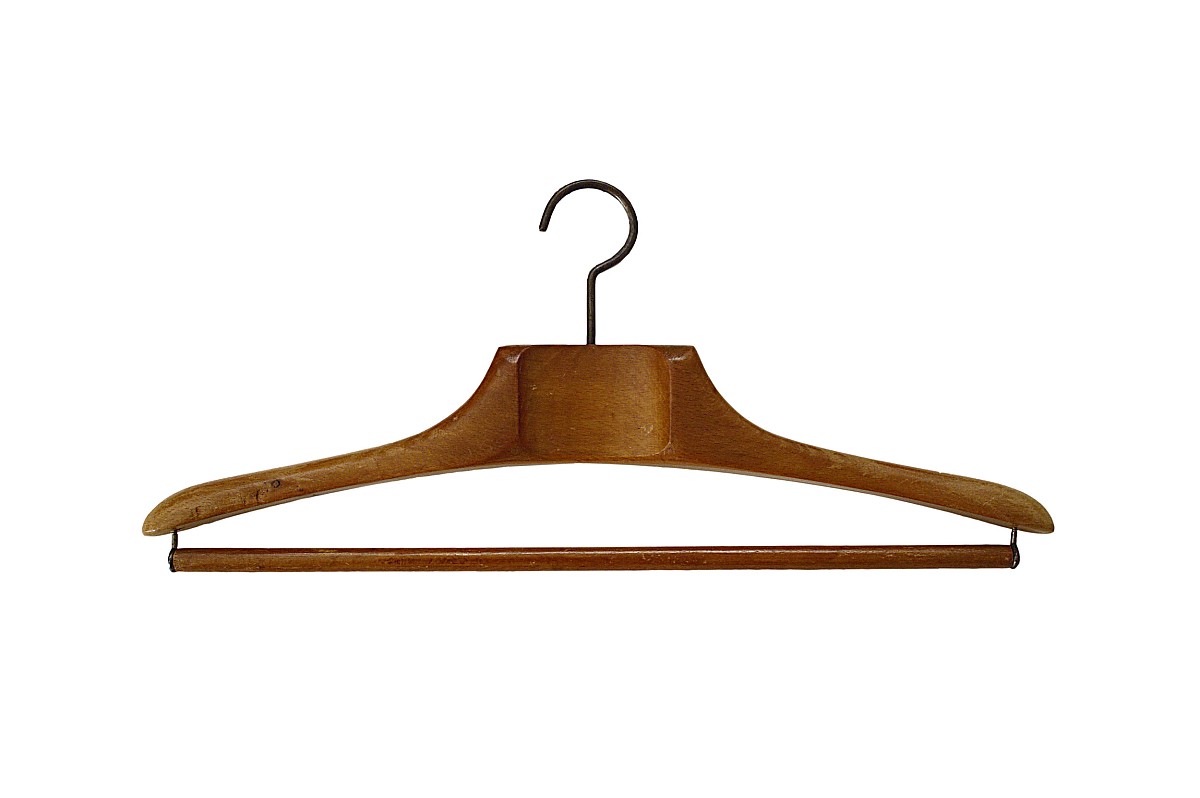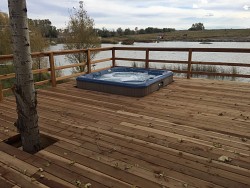Closet Organization: The Right Hangers
 We spend a lot of money on our clothes and our clothes closets, so it makes sense that we should pay attention to the types of clothes hangers we use. Not all hangers are created equal, and there are different types for different purposes.
We spend a lot of money on our clothes and our clothes closets, so it makes sense that we should pay attention to the types of clothes hangers we use. Not all hangers are created equal, and there are different types for different purposes.
Size Matters
The size of the hanger is very important. Children's sizes start at about 10" wide up to adult coat size hangers at 18.5". A slim person should use narrower hangers to avoid stretch marks in the sleeves of their garments while a more substantial person will prefer a wider hanger so their clothes don't slip off through necklines.
Best for Jackets: Wooden Hangers
Wooden flat or contoured hangers are the best choices for suit or sport jackets. The sloped "shoulders" of these hangers follow the natural slope of the garment shoulders, maintaining the shape.
1" wide hangers provide the best support because they spread out the weight of the garment, reducing the chances of stretching the fabrics, which causes bulges. Some wooden hangers come with integrated pants bars or clips. In these cases, you'll need to fold slacks in half to hang and it's best to avoid folding the garment at the knees to minimize additional stress.
Best for Pants and Skirts: Pants Bars
Pants bar hangers allow you to hang slacks full length without folding in half. Fold the pants at the creases and hang the pants upside down from the cuffs. The weight of the pants will help keep wrinkles at bay. Skirts can always be hung from the waistband and should not be folded where possible. Avoid folding in half, which may result in a center front and back crease.
Best for Shirts: Tubular Plastic Hangers
Tubular plastic hangers are excellent for button down or other cotton shirts. The rounded edges will not cause a "punch out" at the shoulders, while the lightweight construction is still durable and will not cause shirts to become misshapen.
Best for Lightweight Knits: Padded Hangers
Padded hangers may look decorative, but they actually serve a very important function when it comes to hanging lightweight knits or delicate garments. A well-padded hanger (usually covered in silk or satin) distributes the weight across the garment's shoulders, reducing stretch points.
Best for Silk: Velvet Hangers
Velvet hangers, whether flat or padded, help keep garments from slipping off. Silk tops and dresses, or those with wider necklines, can easily slip off standard hangers, but the nap on velvet will hold them in their place, while maintaining the garments' shape.
Best for Off-Season Storage: Cedar Hangers
Cedar hangers work well in "off-season" closets for storing wool clothing that may be susceptible to moth damage, or in high-humidity areas where mildew and mustiness is a problem.
Hanger Accessories
There are several accessories available as well to help keep clothing in place. Rubberized "kant" strips strap onto the ends of hangers to provide the friction needed to keep garments from slipping off. Plastic shoulder covers are also a good choice for garments being stored for long periods of time as they can keep dust or pollen from collecting on shoulders, while still allowing the garment to breathe.
What to Avoid
Dry cleaners' wire hangers are to be avoided wherever possible. Their purpose is to transport your cleaned clothes home, but should be discarded in favor of one of the more appropriate hangers above. Wire hangers are easily misshapen in the closet and can become tangled, which is annoying. Their narrow gauge may cause fabrics to pucker in all the wrong places and they are prone to rust in high humidity settings.
Never store garments in the plastic dry cleaners bags either as the plastic will hold in residual moisture, or chemicals used in the cleaning process.
Updated October 7, 2018.
Looking for a Pro? Call us (866) 441-6648

Cleaning Average Costs
Cleaning Services Experiences

We Finally Extended Our Concrete Patio And Our Yard Looks Amazing

Seamless Extension Of Concrete Patio And Poolside Retaining Wall



